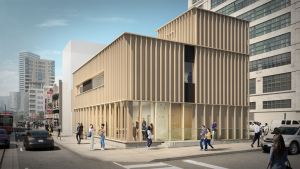Reading how far Canada lags behind on the 2022 Global Climate Change Performance Index is embarrassing. Canada stands in 61st position among 63 other countries, behind only Iran, Kazakhstan and Saudi Arabia.
It’s well-established that buildings are responsible for 40 per cent of the world’s carbon emissions, behind only transportation. On a global basis, if the industry does nothing to correct this, the building sector alone could raise world temperatures by three degrees, twice the amount allowed under the Paris Accord.
What will it take for the Canadian building industry to become truly serious about this?
“Companies can save the planet – but only if doing so is good for business,” writes The Economist.
Today, trillions of asset dollars worldwide may be monitored using “some sort of sustainability lens” it says, thanks largely to ESG mandates demanded by some regulators and investors.
However, there has also been an ESG backlash in some jurisdictions, resulting in actual emission reductions falling short of expectations.
In a guest editorial published in PBCtoday.com, David Partridge, chair of the U.K.’s Net Zero Carbon Buildings Standard, offers two reasons.
First, as more businesses have worked hard to prove their ESG credentials, some have intentionally taken a step back, considering it too “woke” to put environmental and other stakeholders interests ahead of those of shareholders. Second is the “E” in ESG; the difficulty of distinguishing between corporate greenwashing versus measurable, verifiable metrics that could have a true impact on climate change.
Carbon reduction, both in terms of embodiment and emissions, can be addressed by owners and builders at several points during the project process. Improvements to building envelopes can design-in the potential for operational reductions over time; material selection plays a huge role in terms of embodied carbon; and once operational and occupied, Artificial Intelligence (AI) and advanced monitoring can adjust energy supply to real-time building needs.
In terms of energy procurement, most large commercial and institutional structures lack sufficient rooftop area for solar arrays to entirely offset electrical demand. Therefore, attention must be paid to ensure energy procured for heating, air conditioning, lighting and other occupant operations is based on renewable or low-carbon sources.
In fact, cities like Vancouver and New York are joining provinces and states like Quebec and Massachusetts by enacting local policies that restrict or prohibit the use of fossil fuels in new construction projects in favour of cleaner technologies and energy sources.
Design, structural construction and mechanical measures can only go so far over the longer term, however.
Helena Rivers, net zero lead for Buildings + Places Europe with Aecom, says the biggest emission reductions will come from improved collaboration between owners and occupants.
“We need to meet this challenge by picking up pace,” she writes.
One key step Rivers suggests would be to seek agreements on whole building carbon performance between landlord/owners and tenants and embrace green leases and the sharing of energy data.
“Collaboration is a critical element in achieving net-zero.”
“The landlord loses control over the energy demands of the building once the tenants move in,” adds her cohort, Dave Cheshire, a director in Aecom’s sustainability team. Occupants need to be encouraged to measure and adjust energy use over each 24-hour period. With the 9-to-5 office concept a pre-COVID memory in many instances, matching owners’ good intentions with the actions of occupants is critical to the overall success of emissions reductions.
“Occupancy behaviour is everywhere you go,” resilient building consultant Deborah Byrne recently told the Daily Commercial News. “It’s fine to say that you’re going to do all these good things but the business model of how you operate will determine your energy use and will determine how environmentally conscious you really are. You can’t possibly do the things you did yesterday and expect a different result.”
Delayed action not only impacts the environment but also has financial implications. The longer occupants cling to past behaviour, the higher operational costs are for owners.
John Bleasby is a Coldwater, Ont.-based freelance writer. Send comments and Climate and Construction column ideas to editor@dailycommercialnews.com.










Recent Comments
comments for this post are closed